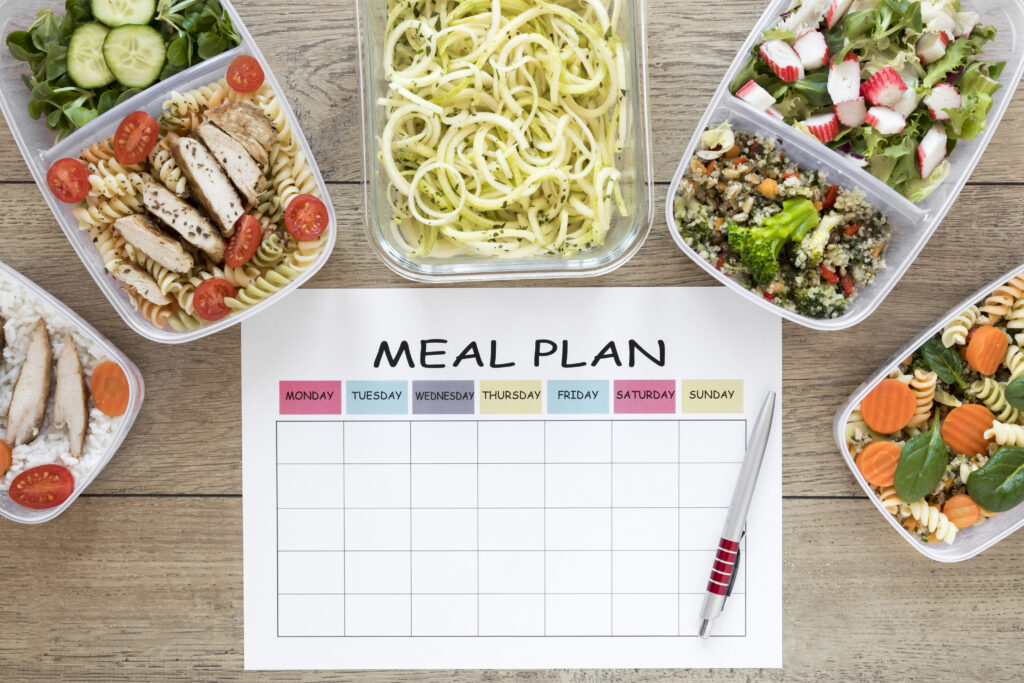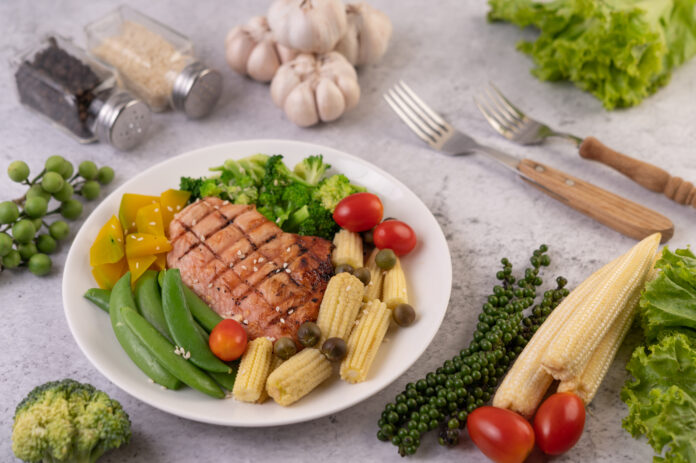In the past few decades, our diets have added a great amount of processed foods that are more common than fruits and vegetables, as Americans find the options of foods that fit into their busy lifestyles. Get started with the Paleo Diet plan, which seeks to ditch processed choices in favor of the foods eaten by our forefathers.
Many health benefits are associated with the paleo diet, from controlled blood sugar levels to reduced inflammation. It’s considered one of the best diets to lose weight because eating high in protein and fats It’s regarded as one of the best diets to lose weight and also emphasizes the consumption of nutrients. It also increases satiety and helps correct malnutrition or under-nutrition conditions. But still, the diet is the subject of much controversy in recent years.
Despite all these controversies, there is a massive community of people who swear by it, claiming that it is a convenient source of food, an easy-to-follow, and an effective way to improve immunity.
Let’s start a discussion to know what it is, and how it works-? Here’s a beginner’s guide to get started for a Paleo diet.
What is the Paleo Diet?
 The Paleo diet contains only foods available to our hunter ancestors thousands of years ago during the Paleolithic Age. The paleo diet doesn’t have processed foods, refined grains, and cereals instead, your dining table should be full of fruits, vegetables, nuts, seeds, and high-quality meats. According to research, these are the foods that our bodies were designed to eat while the heavily processed modern products used today contribute to chronic disease and health problems. Proponents of the diet propose that a well-planned Paleo diet may lead to improvements in many aspects of health, including reduced inflammation and enhanced weight loss. Hence, it is a diet without grains, it tends to be lower in carbohydrates and higher in protein and fat. However, it lacks several food groups that contain beneficial nutrients, like legumes and dairy, which has made the Paleo diet the subject of much discussion among experts.
The Paleo diet contains only foods available to our hunter ancestors thousands of years ago during the Paleolithic Age. The paleo diet doesn’t have processed foods, refined grains, and cereals instead, your dining table should be full of fruits, vegetables, nuts, seeds, and high-quality meats. According to research, these are the foods that our bodies were designed to eat while the heavily processed modern products used today contribute to chronic disease and health problems. Proponents of the diet propose that a well-planned Paleo diet may lead to improvements in many aspects of health, including reduced inflammation and enhanced weight loss. Hence, it is a diet without grains, it tends to be lower in carbohydrates and higher in protein and fat. However, it lacks several food groups that contain beneficial nutrients, like legumes and dairy, which has made the Paleo diet the subject of much discussion among experts.
The Paleo diet follows the idea of eating like our ancestors “The Stone Age Diet” is a book having a comprehensive guideline about the diet taken by our ancestors and by making experimentation according to this book, researchers Melvin and Stanley published a paper on the Paleo diet in the the journal of medicine, which is considered one of the main guideline about the Paleo diet as we know it today. After this research and experimentation, Paleo started to catch on and by 2017, it was ranked as the most searched weight loss strategy on Google. Today, the Paleo diet is the most popular and has a huge fan base of dedicated followers who enjoy the flexibility it provides.
Principles of the Paleo Diet
There are several variations of the Paleo diet, each of which comes with its principles, rules, and guidelines. A few of the most common options to consider when going Paleo are here:
- Standard Paleo Diet: While taking this form of paleo diet, you must follow all of the rules of a traditional Paleo diet. Grains, legumes, and processed foods must be off the table, and your focus must be on whole foods, like fruits, veggies, nuts, seeds, and meats.
- AIP Diet: Also known as the Autoimmune Paleo Diet, this variation involves cutting out foods that enhance inflammation and then slowly reintroducing them to evaluate which of these you can absorb or digest. This diet is considered best for those with autoimmune disorders, including rheumatoid arthritis or lupus.
- 80/20 Paleo Diet: If you find it difficult to give up grains altogether, this may be the right fit for you. The 80/20 diet follows a strict Paleo diet 80 percent of the time and enjoying non-Paleo foods during the remaining 20 percent.
- Pegan Diet: A combination of the principles of the Vegan diet and Paleo diet, termed as “Pegan diet” focuses on plant-based whole foods without animal products altogether. This diet is still somewhat controversial, as some nutritionists have proposed that the inclusion of animal products is an integral part of a balanced diet to achieve results while following the Paleo diet.
- Primal Diet: This diet has a close resemblance with the Paleo diet, the Primal diet follows a way of eating similar to our ancestors. However, the Primal diet permits raw, full-fat dairy and also allows the use of certain types of legumes and fermented soy products.
Benefits of the Paleo Diet
The paleo diet is designed to be linked closely with what human hunter-gatherer ancestors were hundreds of years ago. Although it’s a difficult task to know exactly what our ancestors ate in ancient times, researchers believe their diets contained only whole foods. So, following a diet of whole foods and leading physically active lives had much lower rates of lifestyle diseases, such as obesity, diabetes, and heart disease. This diet may lead to significant weight loss and major improvements in health. Anthropologists also support that the paleo diet is influential for anatomic and physiologic changes in humans, such as increased brain size and reduced gastrointestinal tract size.
Some advantageous effects of the Paleo Diet are jotted below:
- Promotes Weight Loss
Is Paleo good for weight loss? Although results can vary, proof is present that following Paleo has helped many people lose weight. By quitting processed foods and refined sugars for proteins and healthy fats, you can cut calories and promote weight loss. The said diet plan encourages fruits and vegetables, which are high in fiber, along with healthy fats and protein, which improves satiety and reduces appetite.
The amount of weight loss after following the Paleo Diet may vary depending on different factors, such as what type of ingredients you have used to make this diet. While some people may observe the inches and pounds slide off after following Paleo, others may not get satisfactory results.
Protein is vital for repairing and rebuilding body cells and tissues, maintaining normal blood sugar, transporting oxygen, healing wounds, and building muscle mass. Therefore, getting enough protein is essential to maintain overall health.
A diet deficient in protein can lead to a host of negative side effects, such as low energy levels, decreased immunity, poor concentration, and slow wound healing. Protein is the best staple of Paleo. The paleo diet plan encourages filling your plate with protein options, like grass-fed beef, poultry, and seafood.
- Reduces Inflammation
 Inflammation is a bodily response presented by the immune system to protect against foreign invaders. Prolonged inflammation is at the root of most diseases, such as chronic conditions like cancer, heart disease, and diabetes.
Inflammation is a bodily response presented by the immune system to protect against foreign invaders. Prolonged inflammation is at the root of most diseases, such as chronic conditions like cancer, heart disease, and diabetes.
Anti-inflammatory foods are a major part of The Paleo diet plan. It encourages eating plenty of fruits, vegetables, nuts and seeds. Fruits and vegetables contain antioxidants, which help neutralize the harmful free radicals that trigger inflammation in the body. Meanwhile, nuts and seeds also have high anti-inflammatory omega-3 fatty acids. Reducing inflammation may help reduce inflammatory or autoimmune conditions, including rheumatoid arthritis, lupus, or ulcerative colitis.
- Boosts Satiety
Paleo eating supports packing plenty of heart-healthy fats and proteins into your meals, which may help increase satiety and reduce appetite.
Digestion of fats consumes more time and it stays in the stomach for longer and keeps you feeling full. Meanwhile, a diet rich in protein can reduce levels of ghrelin, the hunger hormone, to limit appetite. Protein is also effective for boosting your metabolism and lower caloric intake.
Furthermore, the Paleo diet plan lowers the intake of foods like refined grains and processed foods that are digested very quickly, leading to frequent spikes and crashes in blood sugar levels as well as increased levels of appetite.
- Corrects Nutrient Deficiencies
The Paleo diet prioritizes nutrient-dense foods over heavily processed or refined foods. These choices supply essential micronutrients that you are missing from your diet. Nutrients help reduce a wide range of symptoms, from brain fog to chronic diseases. Intake of red meat can provide more iron while adding more nuts and seeds will add omega-3 fatty acids into your diet that are essential for growth.
- Regulates Blood Sugar Level
Paleo emphasizes the intake of nutrients like fat and protein, which are digested slowly and help keep blood sugar levels stable. A study published in a nutritional journal compared the advantages of following a Paleo diet versus a diet recommended by the American Diabetes and experimented on 30 participants with diabetes. After two weeks, they found that the Paleo diet led to a reduction in blood sugar levels and an improvement in insulin sensitivity than the conventional diabetes diet. Paleo does restrict many types of carbohydrates that may positively impact your blood sugar levels.
No doubt, lifestyle factors also have greater impacts on diabetes prevention, therefore, making dietary modifications, like reducing stress levels, drinking plenty of water, and exercising regularly, can also help you maintain normal blood sugar.
Paleo Meal Planning
 Trying to find a resource on the Paleo diet for beginners? Stop looking further.
Trying to find a resource on the Paleo diet for beginners? Stop looking further.
In this beginner’s guide, you’ll find all the information about Paleo diet basics, some amazing tips for maximizing your success on the Paleo diet, and which Paleo foods you may include or avoid to get started.
Starting your journey by Trying a 30-day Paleo meal plan may help you decide if it’s suitable for you and or not — whether it aims at weight loss, lower blood pressure, or simply overall improved health.
Here’s a list of Paleo foods that you may bring with you to the grocery store for easy reference.
- Prefer organic fruits, vegetables, and unprocessed foods with minimal added ingredients.
- Avoid unhealthy cravings and snack foods and keep them out of your kitchen.
- Do your grocery shopping and prepare your meals at home. This activity will give you more control over your meals and help you enjoy the potential benefits of Paleo.
- Remaining hungry or counting calories is the old idea. Don’t keep yourself away from eating while feeling hungry and listen to your body.
- To get maximum positive results, pair your Paleo diet plan with a healthy lifestyle by incorporating healthy habits like exercise, and keeping yourself hydrated to achieve your goal of weight loss.
Sample Paleo Meal Plan
What should you shop for or eat with a Paleo diet? Are you curious to know what a typical Paleo breakfast, lunch, and dinner may look like, you’re at the right place.
Here’s a sample Paleo meal plans for some inspiration to plan out your menu:
Day 1: Breakfast, Lunch, Dinner, Snacks
- Breakfast: fruit salad with Scrambled eggs
- Lunch: lettuce chicken wraps
- Dinner: roasted broccoli and Grilled salmon
Day 2: Breakfast, Lunch, Dinner, Snacks
- Breakfast: starch-free oatmeal
- Lunch: stir fry mixed veggies and grass-fed beef steak.
- Dinner: avocado, tomatoes, spinach, and almonds with fresh salad and grilled chicken.
Day 3: Breakfast, Lunch, Dinner, Snacks
- Breakfast: omelet with a plate full of veggies.
- Lunch: tomatoes, avocado, lettuce, and cilantro with boiled rice and Fish taco bowl.
- Dinner: sweet potato wedges with grilled lamb chops.
Paleo Recipes
Even after going to Paleo, you can still enjoy your favorite foods with a healthy twist. Swap regular burgers for lettuce burgers, and wheat flour for coconut flour to give your diet a Paleo-friendly makeover. There are various recipes out there for everything from paleo sweets to dinners. Here are a few paleo recipes to get you started:
- Sweet potato chili
- Instant pot chicken breast
- Instant pot pork tenderloin
- Fudgy paleo brownies
- Bunless bacon eggs with cheese
Tips for Success on the Paleo Diet
Foods To Avoid
 It is also important to know the food list which you should cut out from your grocery list Here are the foods that you should avoid :
It is also important to know the food list which you should cut out from your grocery list Here are the foods that you should avoid :
- Peanuts and Beans
- Dairy
- Sugar-sweetened foods
- Refined oils
- Processed food
- White potatoes
- Cereal grains
- caffeinated beverages
Eating Out on the Paleo Diet
Sticking to your Paleo diet menu at restaurants can be a bit more challenging, but it’s necessary to get maximum results. Whenever you go out, follow these simple Paleo rules:
Order a main dish with a meat base like chicken, beef, or fish.
- Switch buns for lettuce wraps, rice for cauliflower rice, and swap all types of starches.
- Order a side dish containing veggies like steamed broccoli, and side salads as substitutes for no extra charge.
- Avoid foods cooked in canola or vegetable oil and eat food cooked in coconut oil or olive oil.
- Avoid the sugary desserts, and enjoy mixed fruit instead of regular desserts.
Conclusion
The Paleo diet has been designed for people who have an aim of weight loss with a healthy diet plan. Moreover, other helpful health effects have also been linked to this diet plan. However, there is no authentic clinical research about the advantages and potential risks of the diet.
Despite all these facts, it has become one of the most popular ways to lose weight, improve heart health, and more. Some main food groups like legumes, processed or junk food, dairy products, and cereal grains are prohibited while following a paleo diet. Instead, it encourages fresh fruits, vegetables, salad, seafood, seeds, nuts and poultry.
Following a paleo diet may result in various beneficial impacts like stable blood sugar levels, increased satiety, increased weight loss, and reduced inflammation or stress levels. But some negative aspects of the paleo diet are also linked, such as this diet is not fit for you if you have any dietary restrictions because it eliminates various nutrients from your diet and adds some unhealthy food groups. Many paleo recipes contain snacks and desserts that may harm your overall health.
So consult with your doctor or dietitian before switching to a paleo diet and make sure that you don’t have any nutritional deficiency that needs to be added to your diet. Last but not least, while following a paleo diet, if you feel any negative symptoms or find no results for your goal, stop it and listen to your body.







